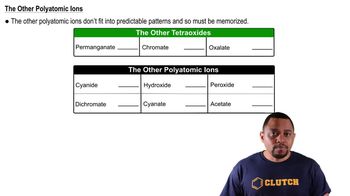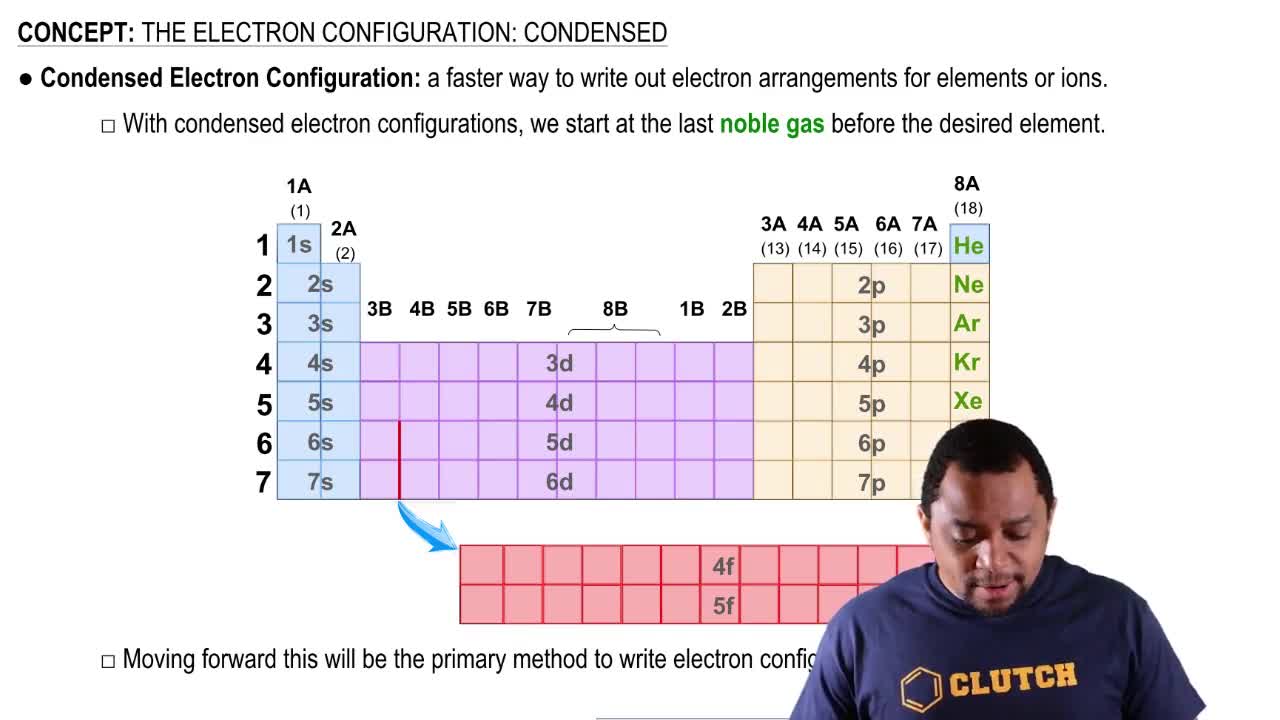Here are the essential concepts you must grasp in order to answer the question correctly.
Hydride Ion (H-)
The hydride ion (H-) is formed when a hydrogen atom gains an extra electron, resulting in a negatively charged ion. This process occurs because hydrogen, with one electron, seeks to achieve a more stable electronic configuration. The addition of an electron allows it to mimic the electron configuration of the nearest noble gas, helium.
Recommended video:
Noble Gas Configuration
Noble gas configuration refers to the electron arrangement of noble gases, which are characterized by having full outer electron shells. This full shell configuration makes noble gases highly stable and unreactive. For hydrogen, achieving a noble gas configuration means having two electrons in its outer shell, similar to helium, which is the closest noble gas.
Recommended video:
The Electron Configuration: Condensed
Electron Configuration
Electron configuration describes the distribution of electrons in an atom's orbitals. For hydrogen, the electron configuration is 1s¹, indicating one electron in the first shell. When it gains an electron to form H-, its configuration becomes 1s², which matches the stable configuration of helium, thus explaining why H- is considered to have a noble gas configuration.
Recommended video:
The Electron Configuration: Condensed
 Verified step by step guidance
Verified step by step guidance Verified video answer for a similar problem:
Verified video answer for a similar problem:



 2:50m
2:50m